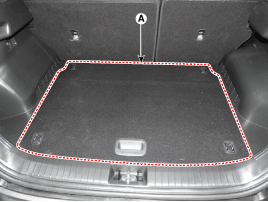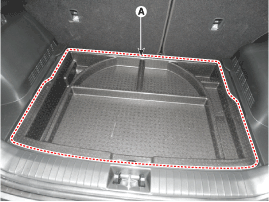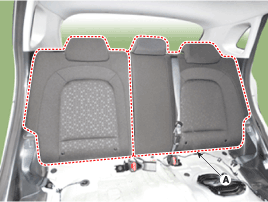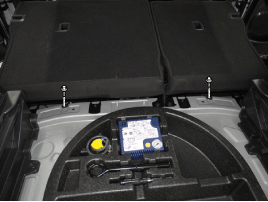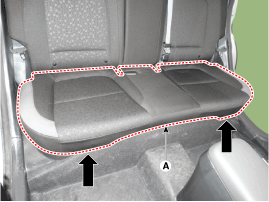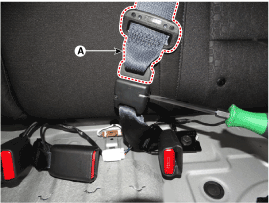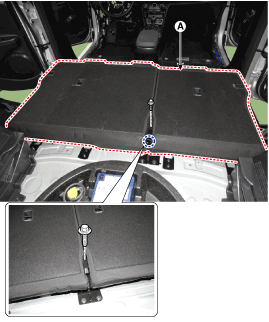Hyundai Kona: Rear Seat / Rear Seat Assembly Repair procedures
Hyundai Kona (OS) 2018-2025 Service Manual / Body (Interior and Exterior) / Rear Seat / Rear Seat Assembly Repair procedures
| Replacement |
[Rear seat cushion assembly]
| 1. |
Remove the luggage covering board (A).
|
| 2. |
Remove the luggage floor center tray assembly (A).
|
| 3. |
Pull up the rear seat back assembly (A) by pulling the stand-up lever.
|
| 4. |
After loosening the mounting bolts, remove the rear seat cushion assembly
(A).
|
| 5. |
To install, reverse the removal procedure.
|
[Rear seat back assembly]
| 1. |
Remove the rear seat cushion assembly.
(Refer to Rear Seat - "Rear Seat Assembly")
|
| 2. |
Remove the center seat belt (A) by pushing it with an awl.
|
| 3. |
Pull up the rear seat back assembly (A) by pulling the stand-up lever.
|
| 4. |
After loosening the mounting bolts, remove the rear seat back assembly
(A).
|
| 5. |
To install, reverse removal procedure.
|
 Rear Seat Assembly Components and components location
Rear Seat Assembly Components and components location
Component Location
1. Rear seat cushion assembly
2. Rear seat back assembly
...
 Rear Seat Back Cover Components and components location
Rear Seat Back Cover Components and components location
Component Location
1. Rear seat back cover [LH]
2. Rear seat back cover [RH]
...
Other information:
Hyundai Kona (OS) 2018-2025 Service Manual: Assist Handle Repair procedures
Replacement
ãÂ
Put on gloves to prevent hand injuries.
ãÂ
Wh ...
Hyundai Kona (OS) 2018-2025 Service Manual: SRS Control Module (SRSCM) Repair procedures
Removal
1.
Remove the ignition key from the vehicle.
2.
Disconnect the battery negative cable and wait for at least three minutes
before beginning work.
3.
Remove the floor console.
(Refer to Body ...
ôˋ 2018-2025 www.hkona.com

